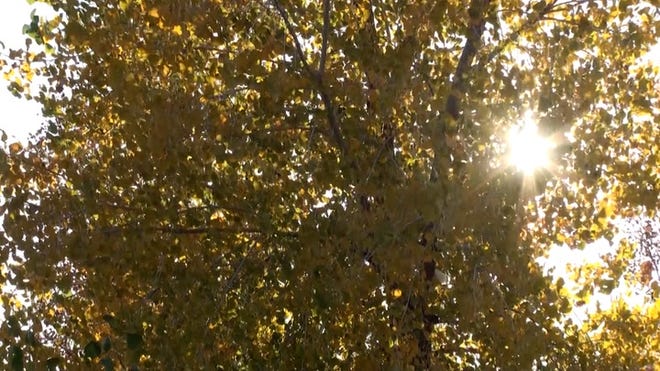
Wednesday marks the arrival of the fall equinox, bringing the first day of the season to the Northern Hemisphere.
Starting Sept. 22, 2021, the days will become shorter than the nights until the winter solstice in December, when the days become longer again.
What is the significance of the fall equinox?
Seasons are caused by the Earth's tilt and rotation, which is on an average 23.5 degree tilted axis.
As the Earth orbits elliptically around the sun, it is at its closest point in January and the furthest in July. Near the summer solstice, which typically occurs around June 21, the Northern Hemisphere is in a more direct path of the sun's energy, producing long days and shorter nights.
The Earth is at the autumnal equinox on or around Sept. 21 each year, happening Sept. 22 in 2021. This marks the beginning of longer nights than days.
According to the National Weather Service, as the Earth revolves around the sun, it "gets positioned such that the sun is directly over the equator. Basically, the sun's energy is in balance between the northern and southern hemispheres."
The same is true again during the spring equinox, which will happen around March 21.
Seasons are opposite in the Southern Hemisphere. As the fall equinox approaches, the southern hemisphere will prepare for spring and longer days, and move into summer as the Northern Hemisphere moves into winter.
What does 'equinox' mean?
The word “equinox” comes from Latin aequus, meaning “equal,” and nox, “night.” On the autumnal (and the spring) equinox, day and night are roughly equal in length.
What exact time is the fall equinox?
The fall equinox happens around the Northern Hemisphere at exactly the same time: 3:20 p.m. EDT, according to the Old Farmer's Almanac.
When will fall weather start this year?
We've already seen a mostly warm and sunny September around Greater Cincinnati, though this week is bringing rain and cooler, more fall-like temperatures.
According to the Old Farmer's Almanac, the long-range weather forecast for the Ohio Valley will be sunny, mild, then rain for the end of September, then mostly rainy, chilly and cold in October.
The almanac predicts October to have an average temperature of 50 degrees and average precipitation around 3 inches through the month.
What about this winter? Old Farmer's Almanac predicts cold, snowy winter in Ohio, Kentucky, Indiana
When will the leaves change?
This year, peak fall color dates are predicted this year in the Tri-state area during October, with more specific dates depending on the region. Here are the probable dates:
- Ohio: Oct. 5-21
- Indiana: Oct. 5-21 (Northern) and Oct. 12-28 (Southern)
- Kentucky: Oct. 5-21 (Eastern) and Oct. 12-28 (Western)
More:When will Greater Cincinnati see peak fall foliage? Here's what the prediction tools say
The 2021 fall foliage prediction map from SmokeyMountains.com predicts the expected beginning, peak and end colors all across the U.S.
Currently, the map shows no change of foliage in the Greater Cincinnati area.
By Oct. 4, the region will see patchy colors, and partial fall colors by Oct. 11. Greater Cincinnati's peak in fall foliage is predicted around Oct. 25 and will be past peak by the beginning of November.
When do we 'fall back'?
Daylight saving time ends at 2 a.m. Nov. 7 this year.
Source link






